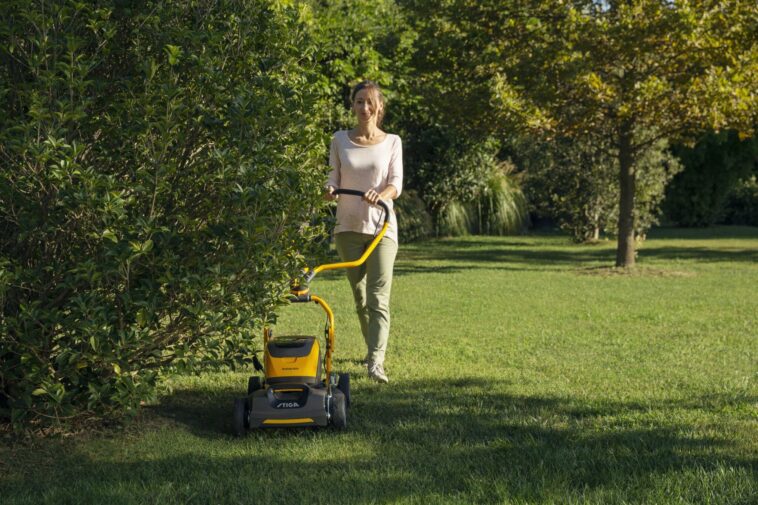Have a jardinit’s not only being able to enjoy moments of relaxation in the middle of greenerybut it also means having to maintain it. To take care of your green space, however, you must have the appropriate tools.
Today, the development of technology has made it possible, among other things, to do so while respecting of the environment. This means you can look after your garden without having a negative impact on the environment. How ? By using ecological tools and by favoring sustainable techniques.
The mulching technique
One of the simplest ways to take care of your garden sustainably is to adopt the technique of mulching.
Using a special tool for this task, such as a Stiga mulching mowerit is possible to reduce the need for nutrients and in water of the lawn without using chemicals.
Mulching is the mowing the grass without pickup. In short, the mulching mower finely chops the grass and lets it lie on the ground. Plant structures decompose quite quickly and free so theeau and organic substances in the ground.
To do this, however, it is essential to have a mulching mower or to purchase a tractor-mower mulching kit.
Opt for a “mixed” lawn
In addition to using a mulching mower, you can also maintain your garden sustainably by opting for a mixed lawn. More precisely, instead of opting for a uniform lawn composed of a single plant species, it is preferable to opt for a spontaneous perennial grass in which multiple varieties of plants and flowers grow.
A garden rich in species resist responds better to seasonal changes and does not require frequent reseeding or large amounts of water. In addition, a “mixed” lawn offers different periods of bloom and a few edible herbs to harvest. Seeds of other desired plants can also be sown in the lawn without the need to till the soil.
However, it is advisable to choose a wet perioddistributing the seeds just before a rainstorm to encourage germination. In all cases, welcoming more varieties of plants (wild or not) in your garden means having a more sustainable environment et aestheticwhich requires less maintenance and resources.
Fertilize the lawn regularly
To sustainably maintain the lawn and keep it in good health, it is essential to fertilize it four times a yearat the end of each season. In addition, it is necessary to choose the right fertilizer, not only to properly nourish the lawn and soil, but also to avoid nitrogen leachingwhich can lead to nitrate pollution.
It is also recommended to use slow release fertilizerwhich ensure a continuous and efficient supply of nutrients. This type of fertilizer prevents nutrient leakage, especially when the irrigation system is active, allowing the lawn to benefit from a maximum benefits while using the least resources possible.
Carefully reseed thinning areas
It is essential to reseed the areas whichlighten. This operation, contrary to what one might think, is delicate but important for the good health of your green space. To do this, it is not necessary to purchase special chemicals, but only potting soil a you sable.
In fact, both are very important elements when reseeding sparsely planted areas. However, if peat-based soils or virgin sand are sometimes used, these choices should not be favored because they are not sustainable. Indeed, peat requires a long time to form, and conversely, virgin sand involves consumption of the earth present in the quarries. Therefore, if you want to respect the environment and take care of your garden in an ecologically sustainable way, you must use high-performance lawn soilswithout peat, and 100% recycled silica sand. You will thus obtain a perfect and soft lawn.
Limit the use of herbicides
THE selective herbicidesalthough very effective, represent a stress considerable for plants to be preserved and can be polluting if used frequently and/or without precautions. These products are indeed harmful and require precautions when using them, to avoid direct contact and harmful inhalation.
However, it is important to emphasize that most weeds can be controlled without resorting to chemicals, simply by adopting a few sustainable maintenance practices, such as remove by hand or maintain the very dense lawnin order to prevent the growth of new weeds.


